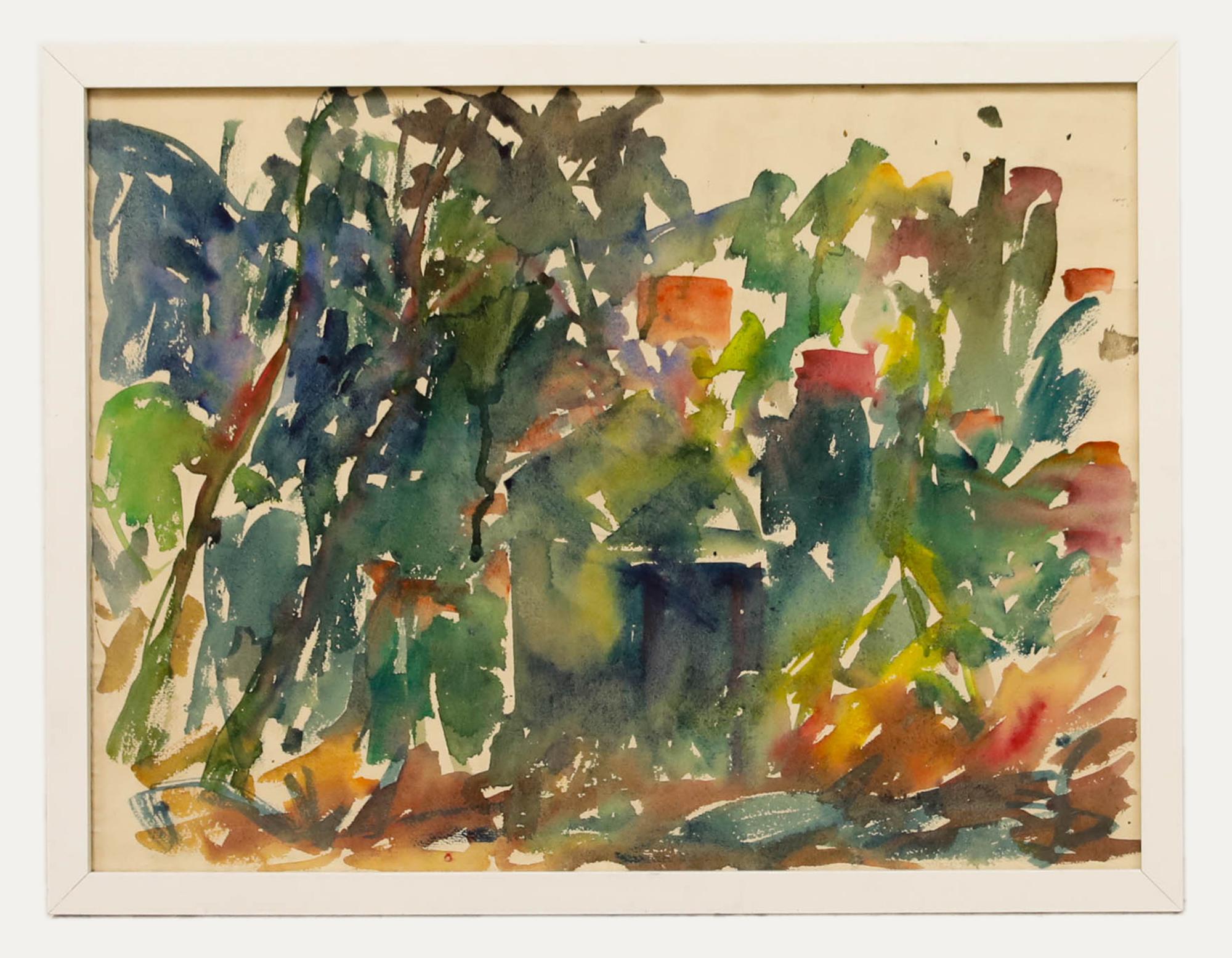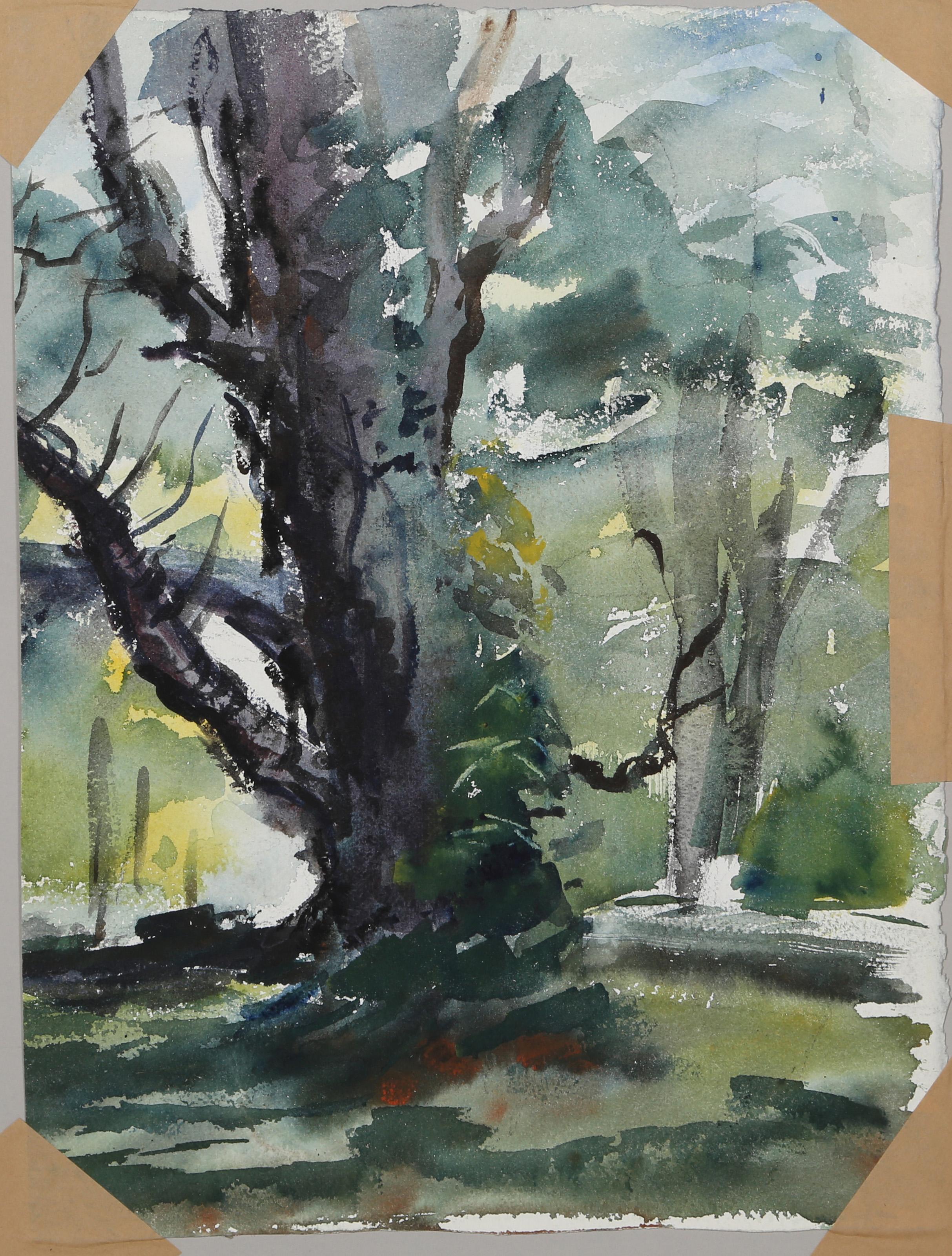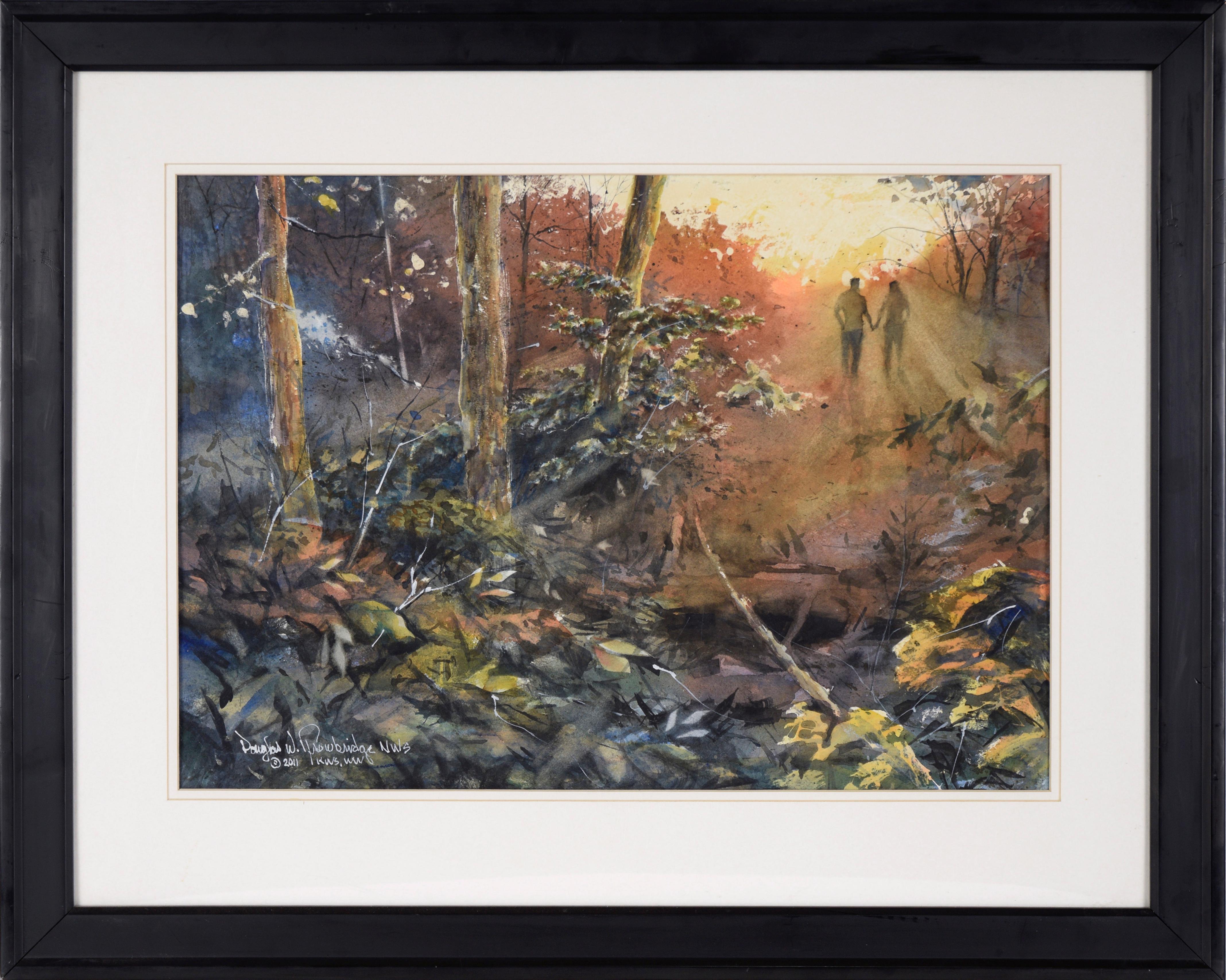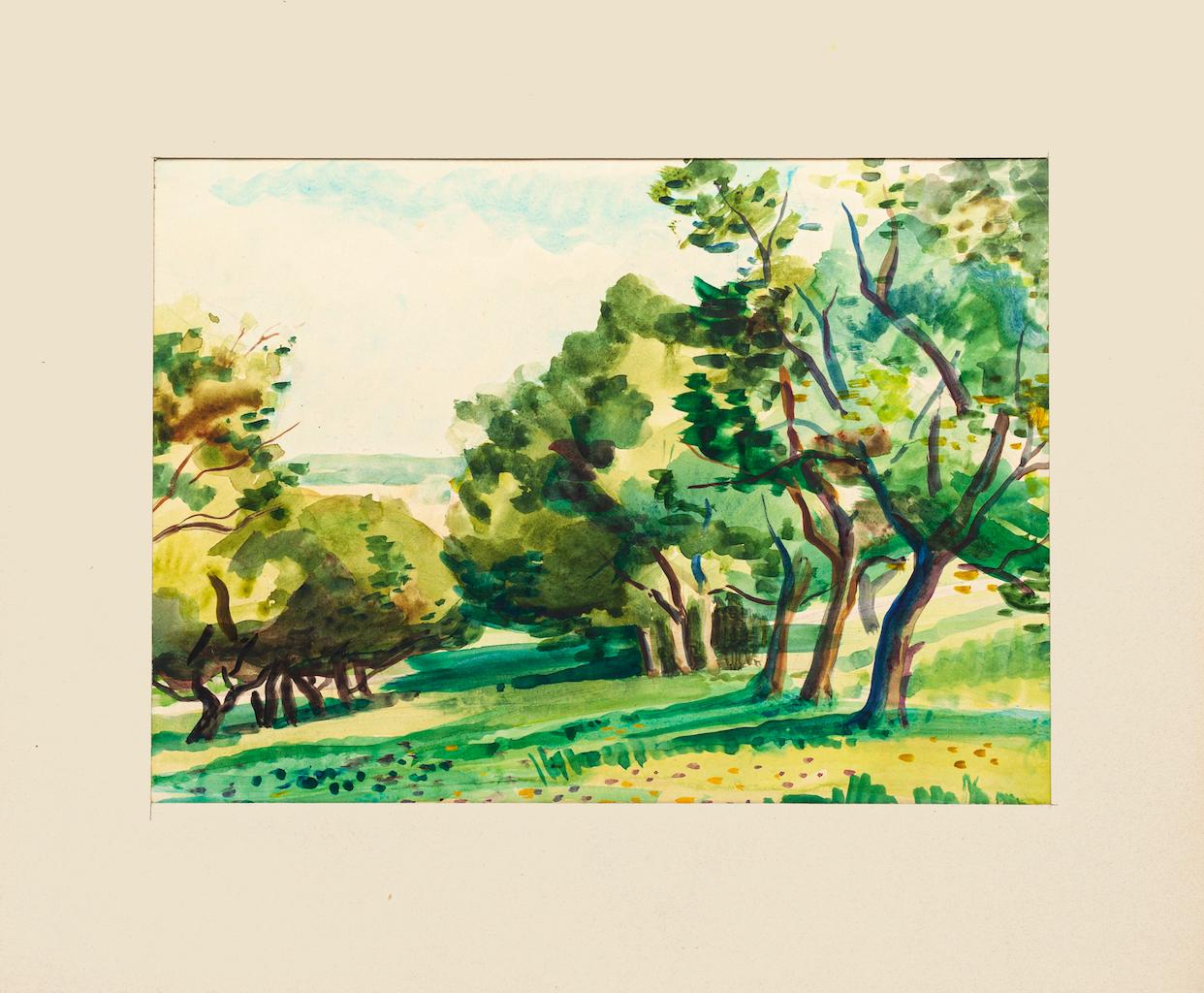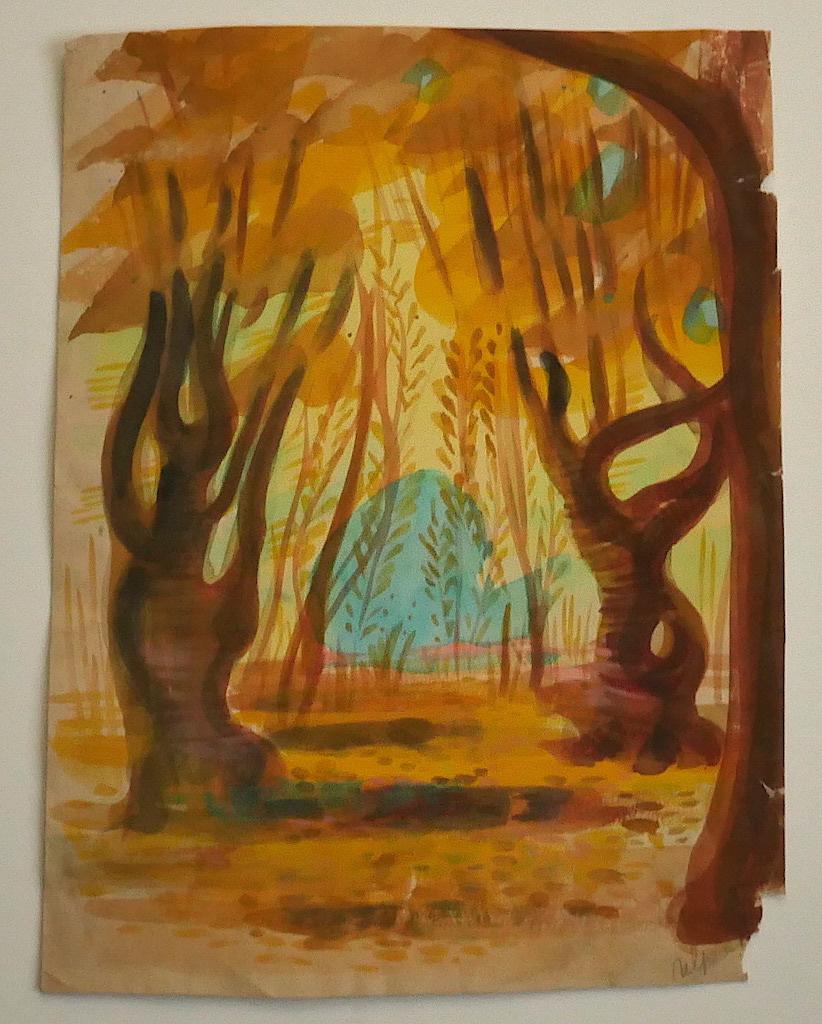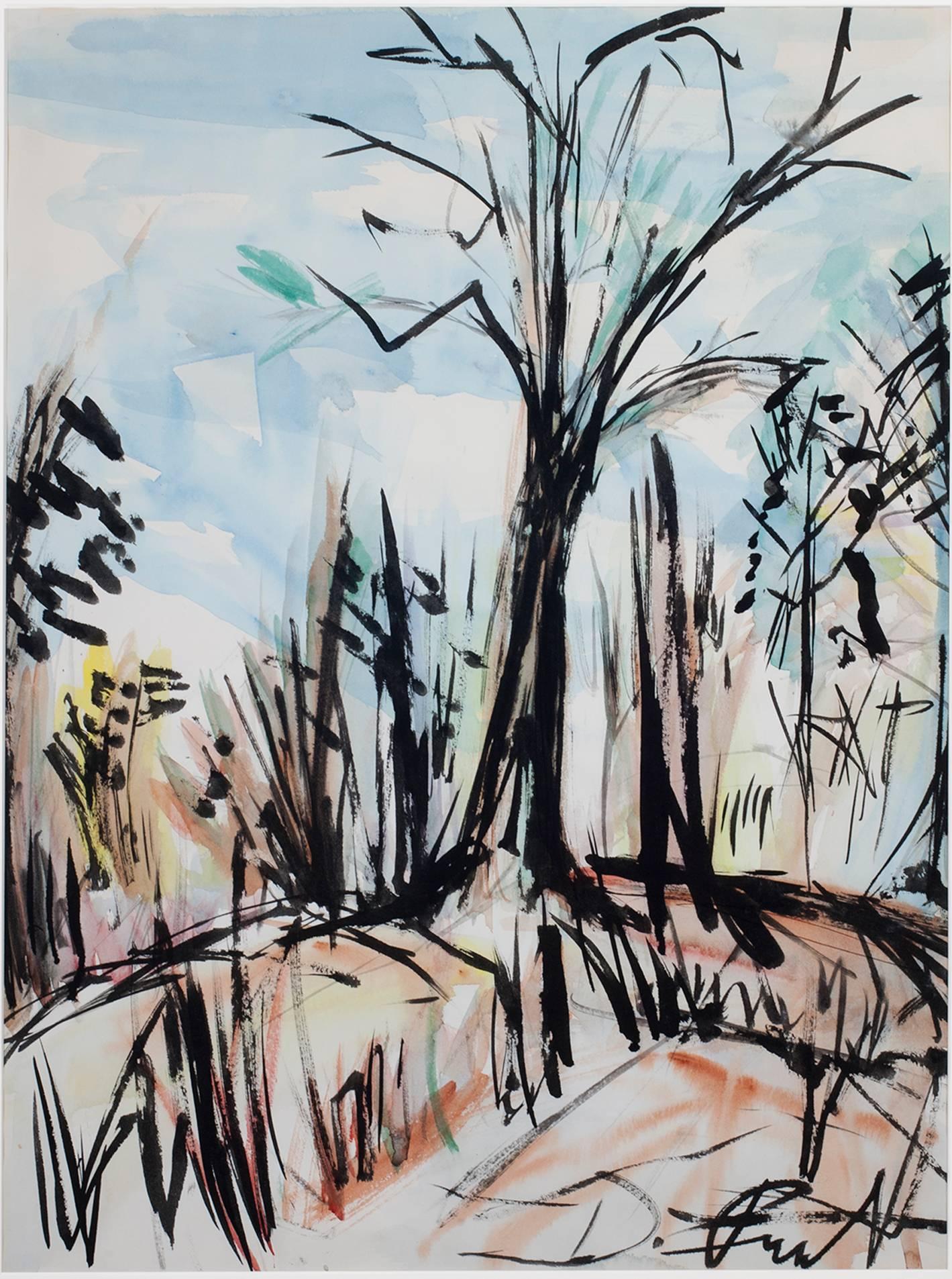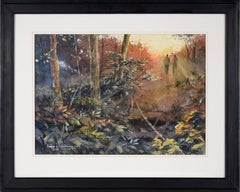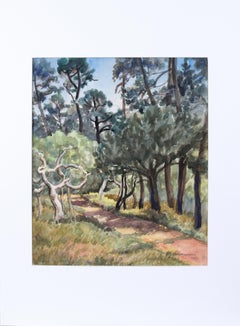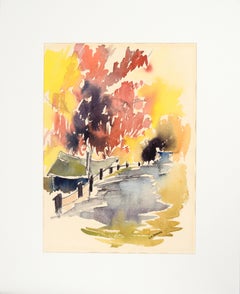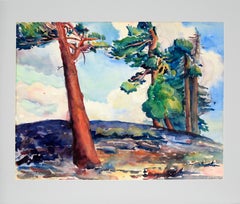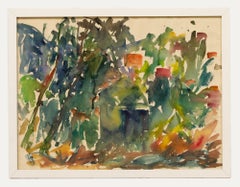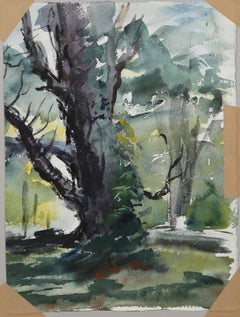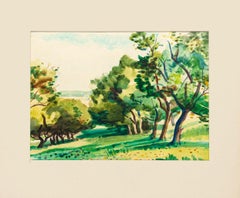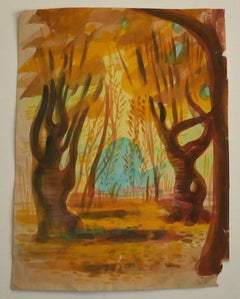Items Similar to Through The Trees - Original Watercolor on Paper
Want more images or videos?
Request additional images or videos from the seller
1 of 10
Bertram SpencerThrough The Trees - Original Watercolor on Paper
$560
£430.23
€494.33
CA$787.71
A$884.96
CHF 462.39
MX$10,801.30
NOK 5,871.01
SEK 5,526.32
DKK 3,688.85
About the Item
Through The Trees - Original Watercolor on Paper
Original watercolor painting depicting a grove of vibrant green trees by Bertram Spencer (American, 1918-1992).
Presented in a light green mat.
Mat: 24"H x 30"W
Paper: 18"H x 24"W
Image: 17 3/4"H x 23"W
Bertram Spencer (American, 1918-1992) was an artist and art teacher originally from Talent, Oregon. Spencer studied at Pomona and Claremont Colleges, earning his Master’s in Fine Arts. He taught art at Watsonville High School from 1950 until 1972. Spencer founded the Pajaro Valley Artists Group and was best known for renovations to the Santa Cruz Museum in 1963, where he painted extensive murals of Native American History.
- Creator:Bertram Spencer (1918 - 1992, American)
- Dimensions:Height: 24 in (60.96 cm)Width: 30 in (76.2 cm)Depth: 0.5 in (1.27 cm)
- Medium:
- Movement & Style:
- Period:
- Condition:Very good condition.
- Gallery Location:Soquel, CA
- Reference Number:Seller: N92161stDibs: LU54214384102
About the Seller
5.0
Platinum Seller
Premium sellers with a 4.7+ rating and 24-hour response times
Established in 1986
1stDibs seller since 2014
2,967 sales on 1stDibs
Typical response time: <1 hour
- ShippingRetrieving quote...Shipping from: Soquel, CA
- Return Policy
Authenticity Guarantee
In the unlikely event there’s an issue with an item’s authenticity, contact us within 1 year for a full refund. DetailsMoney-Back Guarantee
If your item is not as described, is damaged in transit, or does not arrive, contact us within 7 days for a full refund. Details24-Hour Cancellation
You have a 24-hour grace period in which to reconsider your purchase, with no questions asked.Vetted Professional Sellers
Our world-class sellers must adhere to strict standards for service and quality, maintaining the integrity of our listings.Price-Match Guarantee
If you find that a seller listed the same item for a lower price elsewhere, we’ll match it.Trusted Global Delivery
Our best-in-class carrier network provides specialized shipping options worldwide, including custom delivery.More From This Seller
View All"Nature Walk" Forest Landscape in Watercolor on Paper, with Note from the Artist
Located in Soquel, CA
"Nature Walk" Forest Landscape in Watercolor on Paper, with Note from the Artist
Dramatic sunset landscape by notable watercolorist Douglas W. Trowbridge (American, b. 1960).
Signe...
Category
2010s American Impressionist Landscape Drawings and Watercolors
Materials
Watercolor, Archival Paper
A Walk in the Woods - Original Watercolor Painting 1983
Located in Soquel, CA
A Walk in the Woods - Original Watercolor Painting 1983
A watercolor of lush, variegated greens make up this forested trail of cypress and oak trees, a natural wonderland for any co...
Category
1980s Impressionist Landscape Drawings and Watercolors
Materials
Paper, Watercolor
An Enlightening Afternoon Near Oregonia - Watercolor Landscape on Paper
Located in Soquel, CA
An Enlightening Afternoon Near Oregonia - Watercolor Landscape on Paper
A cool pond and walking trail sprawl below an autumn canopy of trees in complementary reds and purples accent...
Category
21st Century and Contemporary American Impressionist Landscape Drawings ...
Materials
Paper, Watercolor, Charcoal
Coastal Trees Landscape in Watercolor on Paper
Located in Soquel, CA
Coastal Trees Landscape in Watercolor on Paper
A vibrant watercolor landscape of towering coniferous trees against a bright blue and cloudy sky, by California artist, Lucile Marie Johnston (1907-1994, American).
Signature in bottom right corner. Presented in a new soft grey mat with foam core backing.
Paper size: 16.5"H x 21.5"W
Mat size: 20"H x 26"W
Born in Santa Rosa, California on May 26, 1907, Lucile Johnston settled in Glendale 1930-1939, later moving to Carmel and then Pacific Grove in Monterey County, California where she remained. she managed Marsh's Oriental Antiques Shop...
Category
20th Century American Impressionist Landscape Drawings and Watercolors
Materials
Paper, Watercolor
Hilltop Through the Trees, Modernist Watercolor Landscape
Located in Soquel, CA
A vibrant modernist landscape watercolor by Laguna Beach, California artist Nevalda Bartolini Liberi (Italian/American, 20th Century). This lovely and bright watercolor features a view of a beautiful hillside, seen through a grove of twisting trees. A charming house is glimpsed in the distance.
Signed "Nevalda Bartolini" lower right.
Displayed in a new white mat. Unframed.
Paper size: 15"H x 22.25"W.
Nevalda Bartolini Liberi was an Italian-American artist active in New York in the 1960's, and later in Laguna Beach, California. She was married to the prolific painter, sculptor, and former Laguna Beach gallery owner Dante Liberi...
Category
Late 20th Century American Modern Landscape Drawings and Watercolors
Materials
Paper, Watercolor
Country Lane in the Pine Forest - Mid Century Landscape Watercolor
By Joseph Yeager
Located in Soquel, CA
Wonderful mid century country lane in the pines landscape watercolor by Joseph Yeager (American, 20th Century). This piece is unsigned, but was acquired with a collection of Yeager w...
Category
Mid-20th Century American Impressionist Landscape Drawings and Watercolors
Materials
Paper, Watercolor, Cardboard
You May Also Like
Anton Gold (1914-1970) - Mid 20th Century Watercolour, Through the Trees
Located in Corsham, GB
A charmingly expressive watercolour captures a wild landscape of woodland trees. Unsigned. Acquired as part of a studio collection. Presented in a contemporary white frame. On paper.
Category
20th Century Landscape Drawings and Watercolors
Materials
Watercolor
Forest, Impressionist Watercolor by Eve Nethercott
By Eve Nethercott
Located in Long Island City, NY
Eve Nethercott, American (1925 - 2015) - Forest (P2.59), Year: 1959, Medium: Watercolor on Paper, Size: 15 x 11 in. (38.1 x 27.94 cm), Description: Leaning to the left, the a...
Category
1950s Impressionist Landscape Drawings and Watercolors
Materials
Watercolor
Trees - Original Watercolor Drawing by Jacques Ciry - 1970s
Located in Roma, IT
Trees is an original watercolor drawing, realized by Jacques Ciry in the 1970s.
The state of preservation of the artwork is very good.
Sheet dimension: 28 x 38 cm.
Included Passep...
Category
1970s Figurative Drawings and Watercolors
Materials
Watercolor
In the Wood - Original Watercolor by Jean Delpech - Mid-20th Century
By Jean Delpech
Located in Roma, IT
In the Wood is an original drawing in watercolor on paper, realized by Jean Delpech (1916-1988).
The state of preservation of the artwork is good except for some ripping and small ...
Category
20th Century Modern Landscape Drawings and Watercolors
Materials
Watercolor
"Trees, " Watercolor Painting of a Winter Scene signed by David Barnett
By David Barnett
Located in Milwaukee, WI
"Trees" is an original watercolor by David Barnett. It depicts some dark leafless trees and shrubs. The artist signed the piece lower right.
24" x 18" art
29 1/4" x 23 1/4" frame
...
Category
1960s Expressionist Landscape Drawings and Watercolors
Materials
Watercolor
Forest - Ink and Watercolor by S. Goldberg - 1950s
By Simon Goldberg
Located in Roma, IT
Forest is an original drawing in mixed media on paper realized by Simon Goldberg (1913-1985). Hand-signed on the lower left.
The state of preservation is very good.
Sheet dimension...
Category
1950s Contemporary Landscape Drawings and Watercolors
Materials
Ink, Watercolor
